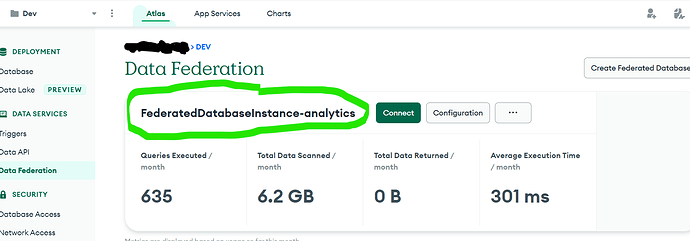Recently I have using this tutorial ([How to Automate Continuous Data Copying from MongoDB to S3 | MongoDB](https://How to Automate Continuous Data Copying from MongoDB to S3)) to try to copy data from assessments(collection name)>analytics(db name)>dev(cluster name) to a s3 bucket. I first created a federated database called FederatedDatabaseInstance-analytics, I then created a a trigger with this function:
exports = function () {
const datalake = context.services.get("FederatedDatabaseInstance-analytics");
const db = datalake.db("analytics");
const coll = db.collection("assessments");
const pipeline = [
/*{
$match: {
"time": {
$gt: new Date(Date.now() - 60 * 60 * 1000),
$lt: new Date(Date.now())
}
}
},
{
"$out": {
"s3": {
"bucket": "322104163088-mongodb-data-ingestion",
"region": "eu-west-2",
"filename": { "$concat": [
"analytics",
"$_id"
]
},
"format": {
"name": "JSON",
"maxFileSize": "40GB"
//"maxRowGroupSize": "30GB" //only applies to parquet
}
}
}
}*/
{
"$out": {
"s3": {
"bucket": "322104163088-mongodb-data-ingestion",
"region": "eu-west-2",
"filename": "analytics/",
"format": {
"name": "json",
"maxFileSize": "100GB"
}
}
}
}
];
return coll.aggregate(pipeline);
};
The thing is, I get no errors runnings it but nothing appears on my bucket
